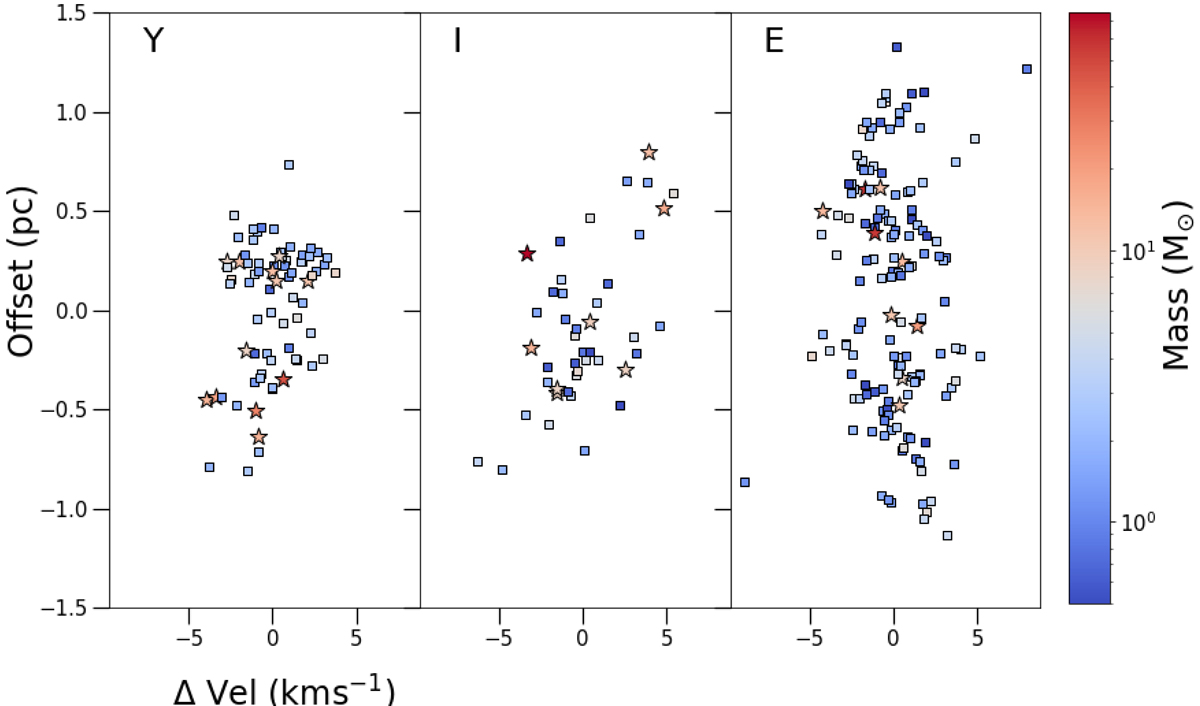Fig. 14.

Download original image
Core VLSR vs the core radial offset grouped by evolutionary classification of the host protocluster; young, intermediate and evolved (Y: left, I: centre, and E: right, respectively). The radial spatial offset for each core is determined by taking the position of the core and subtracting from it the mean position of all cores in its protocluster and assuming the distances given in Table 1 for each region. The velocity offset for each core is determined by subtracting the centroid VLSR found from all cores with single-type spectra in a given region from it. The cores are colour-coded by their mass estimates taken from Louvet et al. (2023), and star symbols represent those cores with mass estimates > 8 M⊙. Cores with a declination smaller than the average position have a negative offset. For the young and intermediate regions, the spatial distribution of the cores is more compact compared to cores in evolved protoclusters, where the cores can be spatially distributed over larger areas (> 2.0 pc).
Current usage metrics show cumulative count of Article Views (full-text article views including HTML views, PDF and ePub downloads, according to the available data) and Abstracts Views on Vision4Press platform.
Data correspond to usage on the plateform after 2015. The current usage metrics is available 48-96 hours after online publication and is updated daily on week days.
Initial download of the metrics may take a while.


